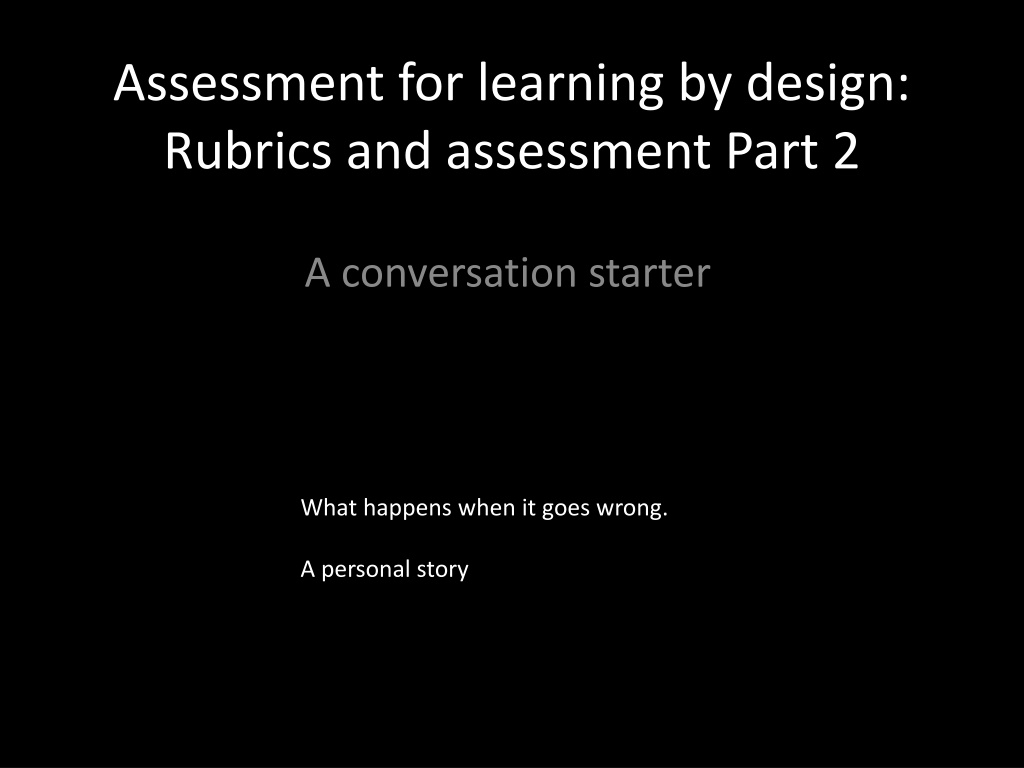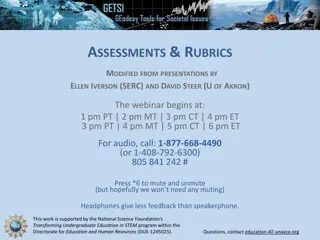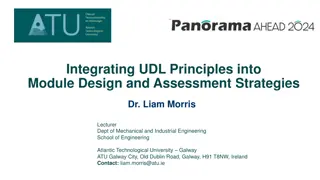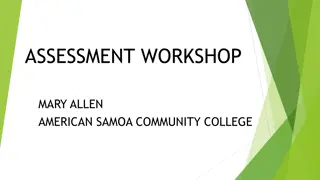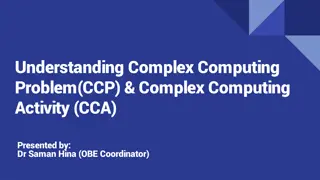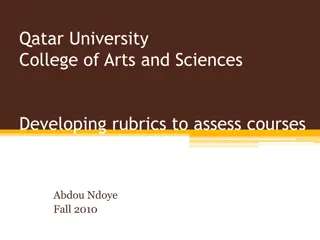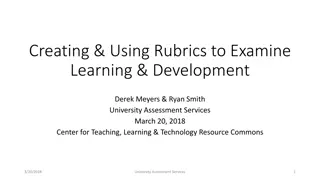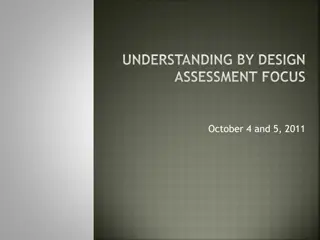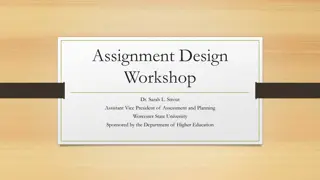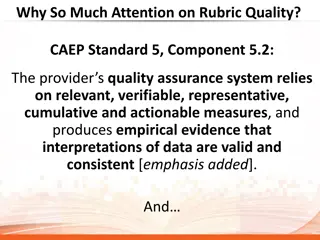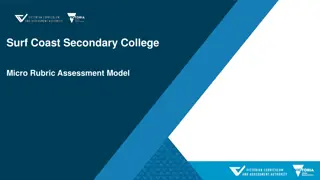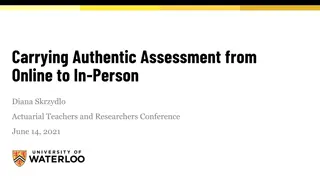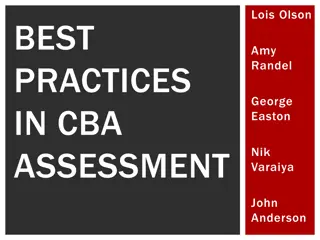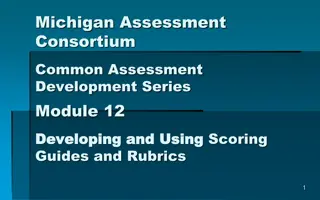Enhancing Assessment Practices through Effective Rubrics Design
Explore the importance of well-designed rubrics in assessment practices, focusing on avoiding pitfalls and maximizing student understanding. Learn how to create powerful rubrics that guide students towards essential learning outcomes. Gain insights on improving assessment strategies and fostering clarity in educational evaluation methods.
Download Presentation

Please find below an Image/Link to download the presentation.
The content on the website is provided AS IS for your information and personal use only. It may not be sold, licensed, or shared on other websites without obtaining consent from the author. Download presentation by click this link. If you encounter any issues during the download, it is possible that the publisher has removed the file from their server.
E N D
Presentation Transcript
Assessment for learning by design: Rubrics and assessment Part 2 A conversation starter What happens when it goes wrong. A personal story
What I want to do? Show you a bog standard approach Identify the difficulties / confusion through examples Introduce a better idea Leave here with something solid
Step 1: of writing rubrics What is the BIG idea of your assessment piece? Think ..1 minute ..crystal clarity Explain to the person next to you Re think and write it down ..5 mins
What a rubric needs to do. Separate standards of work Communicate standards of work
What a rubric should be. Powerful teaching and learning tool that focuses students in on what is REALLY important If you wrote a rubric well you could give it to students INSTEAD of the assessment and ask them what the assessment would be and what was important Attempt to create a shared understanding Higher achieving students and Less awkward conversations why did I get this?
Education literature needs you to be critical Everything is best practice but they use different language and nothing seems consistent Bog standard example
Geoff Scott OLT fellowship Where does you course fit in the program? Alignment but that is not enough Quality assurance needs to be seen in the rubric http://flipcurric.edu.au/
What does this mean? Essay as an example Criteria Rather than Demonstrate an awareness of ethical, health and safety, and regulatory issues appropriate to the laboratory(ies) in which they have completed their clinical practice Introduction Discuss the role of information storage, retrieval and processing in laboratory operations Analysis..
Step 2: what are the objectives that relate to your assessment? .do these fit with your big purpose Or is there a problem?
Step 3: What type of rubric? Analytic or Holistic: http://pareonline.net/getvn.asp?v=7&n=25 Examples: go through Reflective, holistic , Flinders rubric Example, I am confused rubric university approved rubric Grading points Purpose Does it make sense ?
Step 4: P1..what is it ..look to that verb, All yours ..
Alignment: What are the course objectives that relate to this assessment ? 3 parts verb, object and standard Does your big idea connect with these learning objectives? Or Verb noun.. Are your course objectives the right objectives? Is there an agreement about what the learning objectives mean? Biggs, J. & Tang, C. (3rd Ed) (2007) . Teaching for Quality Learning at University. Maidenhead: Open University Press/McGraw Hill.
Blooms vs Andersons cognitive taxonomies
These dont work Understand and appreciate: not verbs for objectives Where an assessment based on group work exceeds 30% of the total marks available for a course, individual contributions will also be assessed Why not, because you can t see appreciation, you can t see understanding Must be observable verbs
Alignment Intended Learning Outcomes (ILOs) expressed as verbs students have to enact Think about concrete and visible Assessment Tasks starting point Format: How the verbs are to be demonstrated: relevance and context 3 parts verb, object and standard Are these still the right objectives? Is there an agreement about what the ILOs mean? Criteria: How you will know: measurement and learning What is competence for this group of students? Or What is a P1? Each course objective MUST be assessed It cannot be claimed without evidence Biggs, J. & Tang, C. (3rd Ed) (2007) . Teaching for Quality Learning at University. Maidenhead: Open University Press/McGraw Hill.
Alignment Teaching / Learning Activities Intended Learning Outcomes (ILOs) expressed as verbs students have to enact Assessment Tasks starting point Designed to support the assessment Format: How the verbs are to be demonstrated: relevance and context 3 parts verb, object and standard Are these still the right objectives? Large class activities Is there an agreement about what the ILOs mean? Small class activities Teacher-managed What is competence for this group of students? Criteria: How you will know: measurement and learning Peer-managed Self-managed Or What is a P1? Classroom-based Outside classroom as best suits context Biggs, J. & Tang, C. (3rd Ed) (2007) . Teaching for Quality Learning at University. Maidenhead: Open University Press/McGraw Hill.
